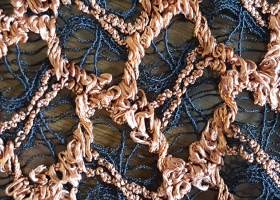
Intimoda Edit
The Year Was 1957…
17 January 2017
In 1957, a young Italian entrepreneur and distributor of several well-known lingerie brands, such as Triumph, had the idea of promoting his wares by creating a trade magazine filled with photoshoots of lingerie on live models.
At the time, it was difficult to find women who were willing to pose in states of undress, especially as the photos were to be published, so the first shoots didn't show their faces. That is the story behind Vito Pisani's launch of Italy's first lingerie magazine. Sixty years later, the Milan-based Intima Media Group has become the leading publisher of trade magazines for the intimate apparel sector, with a global presence that includes six titles and numerous yearly events. Ghislaine Rayer and Patrice Gaulupeau, experts and collectors of lingerie, take us on a journey back in time through fashion and culture.
1957: The Big PictureNew World Order
In 1957, the post World War II era was in full swing, with Dwight D. Eisenhower enjoying his second term as President of the United States, with VP Richard Nixon at his side. In June of that year, a coup attempt was carried out against Stalin's successor, Soviet leader Nikita Khruschev, by old-school, hardliners who opposed his liberalization policies. Mao Tse-Tung was carrying out his first Five-Year Plan, which sought to transform the country into a world power through rapid industrialization. The world was recovering from the Suez Canal Crisis – the most dangerous post-war incident to that date – but peace was restored by spring 1957, when the waterway reopened. The Cold War between the USSR and the West was in full gear, characterized by a frightening build-up of nuclear weapons. Tensions moved into space, when, in 1957, the Soviets launched Sputnik, the first artificial satellite to orbit the Earth; the Space Race had begun, which created a twonation balance of power between Russia and the US, the world leaders in scientific and technological advancement during this period.
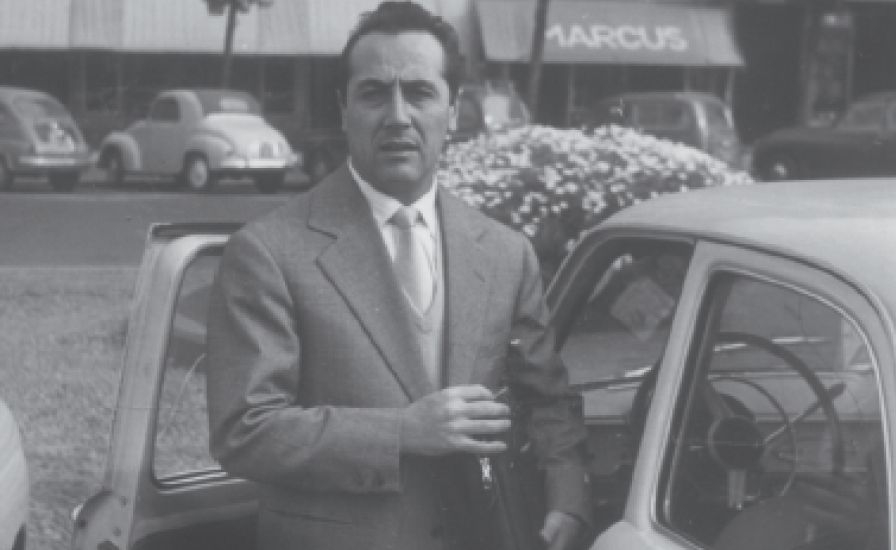
The Post-War Boom in Europe and the US
By 1957, the scarcity of the war years was now comfortably in the past, and the world was enjoying a full-blown economic boom. Mass production and infrastructure spending led to a dizzying increase in international trade. It was not only the economy that exploded; buoyed by the prospect of future prosperity, the birthrate soared, creating the Baby Boom, which lasted from 1945 to the mid-1960s. In Europe, the Treaty of Rome was signed on March 25, 1957 between France, Italy, West Germany, Belgium, Netherlands, and Luxembourg, creating the European Economic Community (EEC), the forerunner of the EU. This agreement paved the way for the free movement of people, goods and capital between member states. The European Atomic Energy Community (Euratom) was also established in 1957 for the peaceful development of nuclear research.
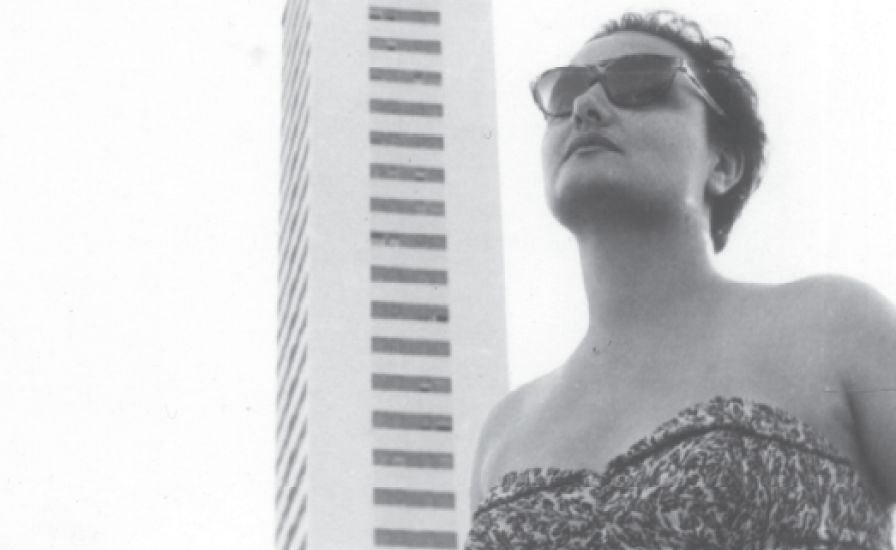
"The car is not a luxury but a means of transportation!”
The automobile didn’t become part of everyday European life until the 1950s, when urbanization required a new means of transport; cars also became a symbol of economic prosperity during this period. In East Germany, the first Trabant – dubbed the "people's car" – rolled off the assembly line in 1957, and was the only car available in the DDR for many years to come; it didn't stop production until the 1990s. In July 1957, Turin-based auto manufacturer, Fiat, launched the first 500, Italy's answer to the VW Bug. It revolutionized the idea of utilitarian cars and became an international icon of industrial design. In the same year, one of the period's most famous cars the, Moskvitch-410, was launched in the USSR.
Life in the 1950s
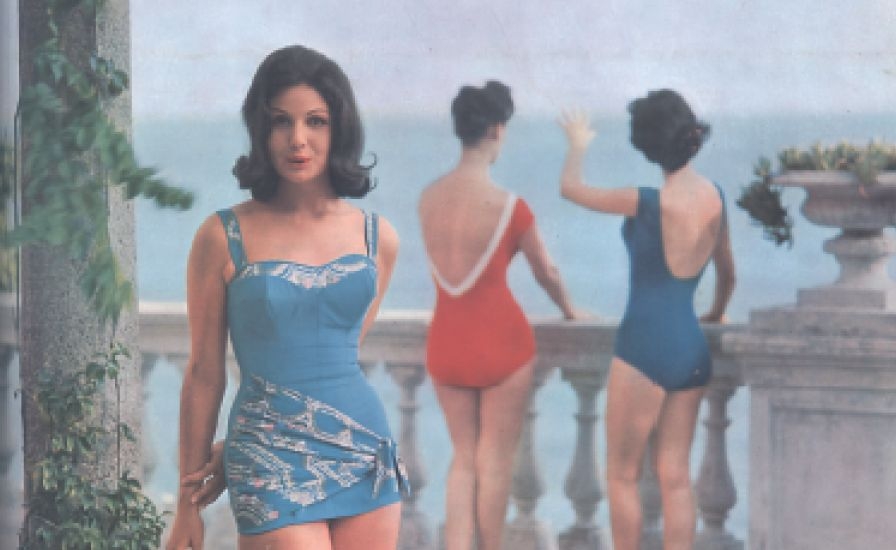
The Beat Generation
While things seemed peaceful and idyllic in the 1950s, a radical counter-culture movement was taking hold in the arts. Abstract expressionism broke down the limitations of figurative art to a state of pure thought and emotion. In 1957, the Leo Castelli Gallery opened, which became the epicenter of the New York art world, showcasing the revolutionary works of Jasper Johns and Robert Rauschenberg, among others. In literature, Allen Ginsberg's collection Howl and Other Poems was banned for crude language and obscenity due to its depiction of drug use and homosexuality. Jack Kerouac published On the Road, written in spontaneous prose, which took its cues from improvisational jazz. The book became the bible of the Beat Generation, whose members were christened "beatniks," after the Russian satellite Sputnik, launched the same year. In 1957 Ayn Rand, an American author with Russian origins, published Atlas Shurgged. In Italy, the Milanese publishing house Feltrinelli published the world premier of Boris Pasternak's era defining novel Doctor Zhivag, forbidden in the USSR. A year later, Pasternal won the Nobel Prize in Literature for this novel.
Rebellious Rock 'n' Roll and Lush Orchestrations
In 1957, Elvis Presley's Jailhouse Rock and All Shook Up topped the charts, while everyone danced to. Meanwhile, jazz, swing and big band melded into a new, sophisticated sound epitomized by Ella Fitzgerald's Great American Songbook recordings for Verve Records. At the same time, Frank Sinatra's fame was at its peak.
From Cinemascope to the Small Screen
In 1957, going to the cinema was an event, complete with a beautiful theater, ushers, a red velvet curtain, and a full program of news, shorts, serials and the main feature. The smash hit of 1957 was the David Lean epic, the Bridge on the River Kwai, starring Alec Guinness and William Holden. Films of this period were lavish, colorful and frothy, often filmed in glorious Cinemascope. Soapy, star-studded tearjerkers like Peyton Place starring Lana Turner and An Affair to Remember, with Cary Grant and Deborah Kerr.
Fast Facts for 1957
The Hamilton Watch Company launched the first electric wristwatch.
Althea Gibson was the first person of color to win the Wimbledon tennis tournament.
Leonard Bernstein's West Side Story debuted on Broadway, the first musical to tackle controversial social issues.
Gentleman's Quarterly (GQ) magazine released its first issue.
Martin Luther King founded the African-American civil rights organization, the Southern Christian Leadership Conference (SCLC), and became its first president. He also appeared on the cover of Time magazine for the first time.
The Nobel Prize
Peace Prize: Lester Pearson, Canadian politician, for his role in the resolution of the Suez Canal Crisis
Literature: Albert Camus, French author, philosopher, essayist, dramatist, and activist
Medicine: Daniel Bovet for research relating to the vascular system
Physics: Chen Ning Yang and Tsung-Dao Lee, the first Chinese nationals to win a Nobel Prize, for their work on parity laws
Chemistry: Lord Alexander Robertus Todd, for his work on nucleotides and nucleotide co-enzymes
The Academy Awards, March 25, 1957
Best Picture: Around the World in 80 Days, starring David Niven and Shirley MacLaine
Best Actor: Yul Brynner, The King and I
Best Actress: Ingrid Bergman, Anastasia
Best Director: George Stevens, Giant. The last of only three films starring James Dean, who died in a car accident after filming.
Best Foreign Film: La Strada (Italy), directed by Federico Fellini and starring Anthony Quinn and Giulietta Masina
Tony Awards: Best Musical: My Fair Lady, with Julie Andrews
Pulitzer Prize for Autobiography: Profiles in Courage, by the young Senator John Fitzgerald Kennedy
Fashions of the 1950s
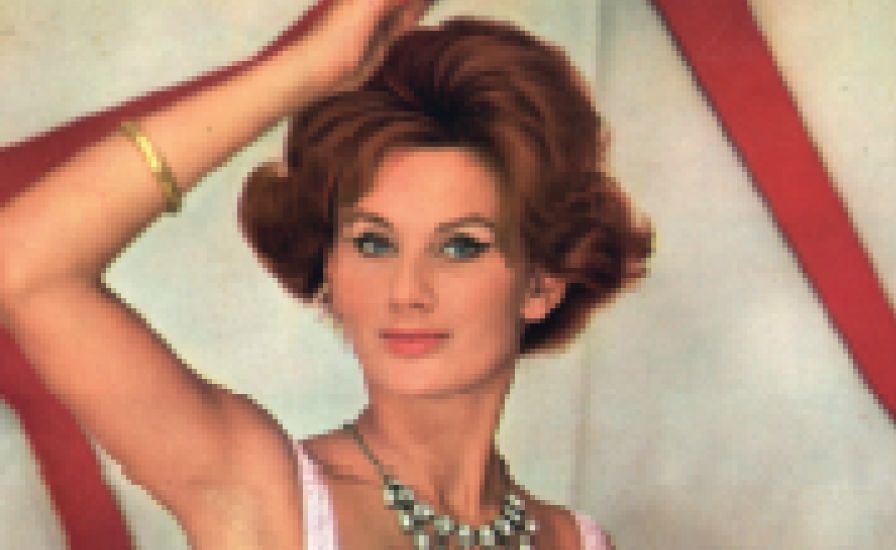
In France: Haute-Couture Reigns Supreme
The 50s were the golden age of Parisian haute couture, as well as the birth of the prêt-à- porter industry. Chrisitan Dior, who created the New Look style that predominated 50s fashion, suddenly died in 1957 at the age of 52. His successor was a talented 21-year-old named Yves Saint Laurent. He created radically new silhouettes in the late 50s with his loose-waisted, proto A-line Trapeze dress and high-waisted, fluid Empire model. Hubert de Givenchy released his famous sack dress in 1957, which was waistless and shapeless. Couture became more accessible and less elitist; other standout designers of the decade include Balmain, Patou, Jacques Heim, Jacques Fath, Cardin and Balenciaga. There were also a surprisingly large number of female designers with their own fashion houses such as Nina Ricci, Maggy Rouff, Madame Grès, Lanvin and the most famous of all, Coco Chanel, whose famous, and perennially stylish, Chanel suit was released in the mid-1950s.
Fashion Icons of the Silver Screen
Marilyn Monroe With her perfect hourglass figure and doe-eyed visage, Marilyn Monroe was the sex symbol of the decade, if not all time. During the 1950s, she graced the cover of the very first issue of Playboy and shall be forever remembered for her iconic pose – in a billowing white dress above a subway grate – in the film, The Seven Year Itch.
Grace Kelly's icy-cold, patrician good looks and aristocratic style skyrocketed her to fame after her debut as a leading lady in High Noon, alongside Gary Cooper. She also became the first American Princess when she married Prince Rainier of Monaco in the wedding of the century.
Audrey Hepburn formed her 40-year collaboration and friendship with designer Hubert de Givenchy when he dressed her for her breakout role in Sabrina. He continued to dress her in the 1950s and beyond, eventually creating the famous little black dress for Breakfast atTiffany's. Audrey Hepburn's hallmark style was thoroughly modern, defined by strippeddown minimalism, without ever sacrificing femininity.
Elizabeth Taylor The 1950s saw La Liz transition from child star to wide-eyed ingénue to full-blown to the diva, whose sultry sensuality was always tinged with a non-threatening vulnerability. She also forever became an icon to the lingerie community with her role as Maggie the Cat in the film adaptation of Tennessee Williams' Cat on a Hit Tin Roof, in which she spent a huge chunk of screen time in nothing but a slinky negligee.
Sophia Loren, the famous Italian diva, was extremely popular during this period. She starred in classic films such as Pane, Amore e…, Yesterday, Today and Tomorrow, La Ciociara alongside the great actors of the time including Marcello Mastroianni, Cary Grant, Anthony Quinn and William Holden. With her Mediterranean curves and seductive accent, she brought a carnal, distinctly Italian, sexuality to her screen roles.
Brigitte Bardot, the French fashion icon, popularized many styles during this period such as, the Bardot neckline – a wide, open neck that exposes the shoulders – as well as the bikini, capri pants, wide-belted dresses, gingham, ballerina flats, and an early incarnation of the beehive hairdo. Her breakout role in Roger Vadim's And God Created Woman catapulted her to international stardom.
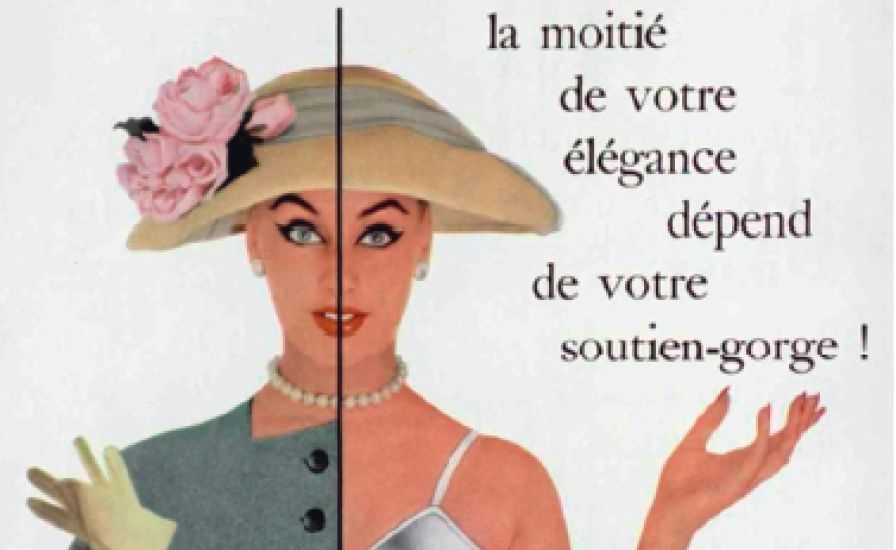
Fashion Trends of the 1950s
Women of the 1950s were concerned with one thing – looking ultra-feminine. The decade was defined by Christian Dior's New Look, which made its debut in 1947. After the austerity and rationing of the war years, fabric was back. The New Look was defined by a full, mid-calf length skirt and tiny, wasp waist, which emphasized the bust. Throughout the decade, many silhouettes, including the famous "hourglass," came in and out of fashion,with one constant, a tiny waist. In 1957, full skirts in colorful patterns were popular, as were strapless dresses and figure-hugging, below-the-knee pencil skirts, made popular by Marilyn Monroe and Grace Kelly. By the end of the decade, a more relaxed style was taking hold, with capri pants and looser fitting dresses.
Lingerie in the 1950s
Lingerie's Golden Age
In France, just as for haute couture, the 1950s ushered in an era of change and evolution for lingerie. The industry's leading brands were practically all replaced within twelve short years, from 1946 to 1958. Legendary brands like Libron, Silhouette, Star and Prestige all disappeared; the exceptions were historic labels that adapted to dramatic shifts in manufacturing and distribution, such as Cadolle, as well as Barbara, Lejaby and Scandale, who had their roots in the 1930s. New brands filled the gap: Lou, Boléro, and Empreinte in 1946; Rosy in 1947; Simone Pérèle in 1948; Chantelle in 1949; Lise Charmel in 1950 and Aubade in 1958. The situation was similar in Germany. Brands that survived the tumult of the war included heritage labels like Felina, Triumph, and Anita, which all date back to the mid-1880s. Triumph launched its famous Amourette model in 1954, which is still in production today, and Anita moved its headquarters to West Germany after the division of the country. In Italy, Imec was a well-known brand, and in 1954, the legendary La Perla was founded, which to many is the ne plus ultra in luxury lingerie, even today. Other brands that were popular on the world market include PrimaDonna (1865) from Belgium, Zimmerli (1871), Calida (1941) and Hanro (1884) from Switzerland, as well as the Italian Ragno (1879), Lisanza (1920) and Oscalito (1936), or the Austrian Wolford (1950). In the USA, Warner's, which dates back to 1874, was sold alongside Maidenform and Playtex, famous for its latex girdles. Finally, global megabrand Wacoal was founded in 1946 in Japan.
Lingerie in 1957
The French lingerie union, the Chambre Syndicale de la Haute Corseterie, set the following rules which had to be followed by its members in 1957: "The chest should be extended, the breasts round, the hips curved. Specialized bras and girdles are necessary to create a smooth and elegant shape, essential for the season's new dresses." In 1957, two different silhouettes were in fashion: tight-fitted dresses, and dresses with a small waist and full skirt. French magazines at the time gave readers the following lingerie advice:
- For a fitted dress, a one-piece corselet or a high-waisted girdle accompanied by a longline bra or bustier
− For dresses with a full skirt and wasp waist, a basque to shape the chest and upper hips, or a corselet with attached garters.
Petticoat Junction
In order to give shape to full skirts, it was necessary to wear a petticoat. Made from nylon, a petticoat could be single or double-layered, and trimmed with ruffles or rigid lace. While they were often white, they were also available in bright colors and floral prints. In France, luxurious models were sold by brands like Hélios, Gui, Chesterfield and, especially, Neyret, whose production was almost at the level of haute couture. American girls often ordered petticoats from Sears and J. C. Penney catalogues. This style remained popular through the early 60s, and its most extreme form was a stiff, hooped crinoline.
Stockings Go Seamless
In the 1940s, creative women, dealing with war rationing, used to draw lines on the back of their legs to give the illusion of wearing stockings. In the mid-1950s, thanks to the circular loom, seamless hosiery was invented. Stockings had to be worn with the ever-sexy garter belt, until the invention of pantyhose in 1959, which covered the wearer from the waist to the toe – and whose appearance paved the way for the miniskirt.
Perky and Pointy
In the 1950s, a small waist with a pointy, ample bust that sat high on the chest was the ideal figure, both in Hollywood and at home. Bullet bras and longline bras helped create this coveted cleavage. In the USA, novelty items emerged to help women achieve the generous proportions that were stylish at the time. Lingerie brand, La Resista, marketed a model named the Très Secrète, a push-up bra that could be inflated to different sizes with a straw. While the Americans used French-sounding names to add allure, the opposite was sometimes true across the pond. When the French label, Scandale, later introduced its own inflatable bra, they named it the Very Secret. In 1956, the French brand, Lejaby, launched the plunge bra, which was popular through the mid-1960s.
Smoothing and Shaping
The popular tight-fitting dresses of the 1950s required lingerie that smoothed out the figure. One-piece corselets offered maximum shaping, but were also a bit restraining. For those preferring separates, a high-waisted girdle, made from elastic and nylon, created a smooth line for the belly and back, while narrowing the waist. Bottom edges were elasticized to ease walking. Legged panty girdles were also worn under tight-fitting capri pants to provide a perfectly rounded shape.
The guêpière taboo
While the guêpière, the sexy French corset, complete with suspender belt, was invented ten years before it was still popular in 1957. However, due to its expensive price tag and changing fashion trends which made it seem too erotic, it quickly fell out of favor and was exiled to the world of cinema. Worn on screen by famous actresses such as Sophia Loren, Anouk Aimée, Lana Turner, Marilyn Monroe and even Brigitte Bardot, this piece of lingerie is forever immortalized on film.
Revolutionary Fabrics
Most lingerie sold in the USA in the 1950s was made from cotton knit, rayon, nylon, or satin, while girdles were made from nylon or Lastex.
Lastex, invented in 1930, was called the Miracle Yarn. It combines a rubber latex fiber with another yarn, such as cotton, silk or viscose, creating a stretchy fabric. Lastex was far from the high-tension fabrics of the future, but it was still an extreme step forward at the time. It was used extensively in lingerie and swimwear.
Nylon was invented in 1939 by DuPont, and was originally used for hosiery. In 1940, however, thecompany turned its full attention to manufacturing nylon parachutes for use in the war, and halted the production of stockings. At the end of the war, nylon was used in all aspects of daily life, but especially for lingerie. Easy to wash, quick-drying and wrinkleproof, this fiber radically changed the lives of women. The final mention goes to polyester. The world's first polyester factory was built in 1950 in Delaware by DuPont and rapidly gained popularity for use in a wide variety of clothing, including lingerie. It was cheap, easy to wash and did not wrinkle. It created a rougher fabric than nylon or rayon, so was often used for less expensive lines, making stylish undergarments affordable for all women.
Lingerie Dreams
Founded in 1922, Maidenform is one of America's most important lingerie manufacturers of all time. In the 1950s, they released their legendary advertising campaign, "I Dreamed I…in My Maidenform Bra," which ran for over 20 years. Each advertisement would feature a new adventure that a woman dreamed she did in her lingerie; in 1957, these include: having tea for two; posing for a fashion ad; crashing the headlines; getting lost in the London fog; and racing the wind.
In France, a few companies, such as Scandale, would show seductive women in comehither poses, but the majority of advertising showcased wifely problems relating to pleasing her man, such as the LOU ad which said, "My husband is right, my old bra did make me look heavier."
Throughout the decade, lingerie advertising increasingly shifted from illustrations to favor the use of live models; in both, women were featured in stiff, artificial poses. It wasn't until the 1960s that societal changes unleashed a new female archetype for use in lingerie advertising – one that was active and liberated, feminist and feminine.
Copyright 2024. All rights reserved - Terms




